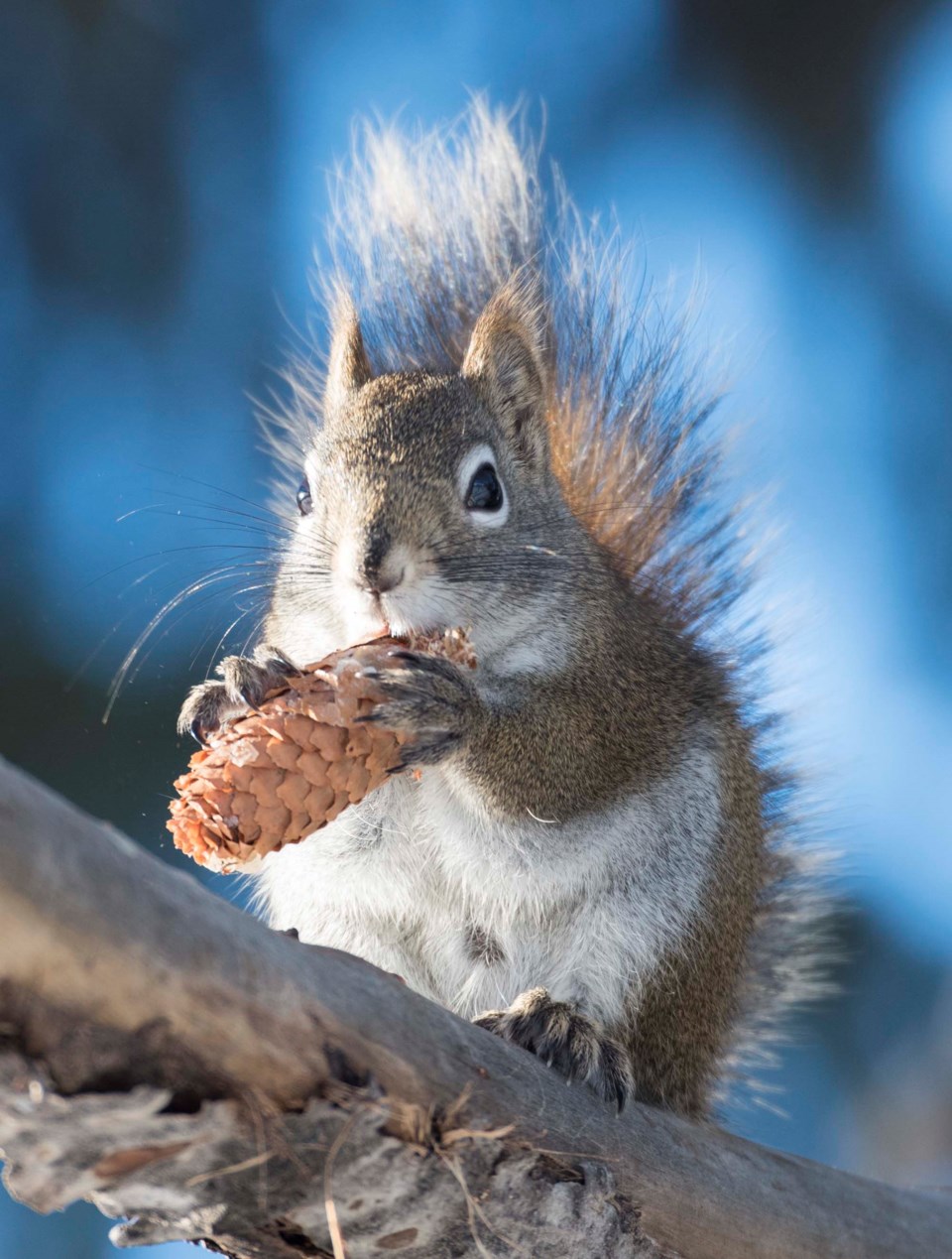Squirrels gamble on the spruce cone lottery because they can win more by playing and losing than they do by sitting out, a new study suggests.
Researchers at the University of Michigan and University of Alberta published a study in Science Jan. 19 on why red squirrels often make costly mistakes when it comes to planning the size of their litters.
Scientists have studied squirrels in the Yukon for decades as part of the Kluane Red Squirrel Project. Those studies show that the squirrels can predict when spruce trees will produce lots of cones (food) in what’s called a mast year. About 53 per cent of squirrels will have bigger litters in mast years than non-mast years, despite the fact they give birth many months before the trees produce cones.
Researchers think the squirrels do this by eavesdropping on the trees, explained U of A study co-author Stan Boutin.
“In the autumn before a mast occurs, a tree produces a whole bunch of buds — called reproductive buds — rather than vegetative buds,” he said. These buds become cones instead of needles the following fall.
Squirrels eat these buds over the winter and may be able to predict an upcoming food jackpot by interpreting the hormones in the buds, Boutin said. If they guess right, they win the game of life by having more babies survive to pass on their genes.
Bad bets are good
But many squirrels guess wrong, said study lead author Lauren Petrullo of the U of Michigan. About 23 per cent of squirrels miss the jackpot by having small litters during mast years, while around 27 per cent lose pups to starvation by having big litters in non-mast years. She and her team wanted to find out why the squirrels make these mistakes.
Petrullo’s team looked at data from about 1,000 female squirrels in the Kluane study collected over 31 years and combined litter size, pup survival rate, and whether or not there was a mast year to determine the impact of each mistake on a squirrel’s reproductive success.
The team found squirrels with big litters in non-mast years didn’t lose much — some pups died, but they had the same number of survivors as females who had small litters.
In contrast, squirrels with small litters during mast years lost big time, suffering a 97 per cent drop in reproductive success compared to squirrels with big ones. A squirrel that missed one mast year had to catch three to make up for it — impossible, as squirrels live around four years and mast years happen every four to seven.
“It’s really, really costly for females who do not produce large litters in mast years,” Petrullo said.
These “wrong” predictions might be the result of risk management, she explained: by gambling with big litters more often, the squirrels take the smaller risk of losing pups over the bigger risk of missing a mast year.
While this suggests squirrels should have big litters all the time, Petrullo said the squirrels don’t do so because making babies is costly in terms of food. When the squirrels had access to extra food in the form of buckets of peanut butter, they had bigger litters more often and benefited less from mast years.
“They love the peanut butter. I think they prefer chunky over smooth,” Petrullo said.
Petrullo said this kind of research can help us understand risk calculations we can’t ethically study in humans. Global heating was also making mast years happen more often, which could affect squirrel reproduction.
“Squirrels play a really important role in the ecosystem up there (in the Yukon),” Petrullo said, and this shift could affect the balance between squirrels and trees.
The study can be found in the Jan. 20, 2023, issue of Science.




